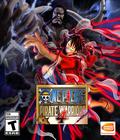
Genre: Fighting
Publisher: Atari
Developer: Spike
Release Date: November 13, 2007
 Many anime fans in America started out with the Dragonball series, and with Dragonball Z Budokai Tenkaichi 3, Akira Toriyama's well-known creation enters the world of fighting games once again. In this third installment of Budokai Tenkaichi, the whole of his work — and a bit of his inspiration from GT — is brought together in one large compilation. Now, before I go into a rant about drawn-out franchises losing their touch and the insane amount of games for this series for the SNES and PlayStation ... it turns out that this game is actually a nice boon to the series.
Many anime fans in America started out with the Dragonball series, and with Dragonball Z Budokai Tenkaichi 3, Akira Toriyama's well-known creation enters the world of fighting games once again. In this third installment of Budokai Tenkaichi, the whole of his work — and a bit of his inspiration from GT — is brought together in one large compilation. Now, before I go into a rant about drawn-out franchises losing their touch and the insane amount of games for this series for the SNES and PlayStation ... it turns out that this game is actually a nice boon to the series.
Although the series has lost a lot of its original luster for me, the fighting has always remained an important component. As such, the developers thought it would be nice to add almost everything; from the Dragonball universe to the game, from the entirety of Dragonball Z to GT, and even some of the characters and storylines are retold with you as the lead fighter. Even the movie characters are brought into the action as the universe of Dragonball is at the disposal of the player's controller. The amount of content is a welcome change, since the franchise has been lacking in that area.
The battle system tutorial seems rather daunting, but it's actually rather straightforward. The controls become far more intuitive than I first expected; after the intense speed of the battles — exactly how the games should be interpreting anime combat — you'll be performing the advanced techniques fluently just in time to really get involved with the "Dragon History" mode, which depicts three of the more important fights in each story arc (Sayjin Saga to Buu for DBZ, and up to the end of GT). Fights from the 13 movies are also included, alongside slightly Dragonball-influenced "what if" scenarios that depict nine different alternate scenarios. Other modes include the Ultimate Battle options, which provide simulation-based development before combat and condition-based battles, and the ever-present tournament scenario, which allows one to participate in multiple tournaments based on the time of the game's internal clock.
Like all the installments of the Budokai series, you are allowed to manipulate and essentially create your own version of Z fighter. Unlike the earlier games in the series, each character — and there are a lot of them, as the same character has several possible renditions — has his or her own set of moves and techniques that the player no longer has to customize. Instead, special abilities and attribute-enhancing equipment can be purchased by collecting Z Points throughout the game's available modes, and equipped to the different characters in turn. Moves and items are also gained through the "Disc Fusion," where someone who owns the prior Budokai installment may imprint the data on the new file, creating a foundation for progress. Even different versions of the same character have slightly different fighting styles and require a different method of play, especially when the game prompts you to be familiar with several characters by using different ones in story modes and selecting characters for you in some of the tournaments. Some great work was done in making them unique as well as the incentive of improving them through achieving Z points and Dragonballs, which are collected as you play all of the modes, rather than just one. This, combined with a comprehensive battle system, multiple modes, and the "tag-team" and versus modes, will keep the player entertained for hours.
Since the game usually opens with an anime scene, I was pleasantly surprised when it turned out to be a 3D opening sequence. Although it's clear that the characters would never interact in such a way, it works nicely. Overall, the 3D landscapes are smooth and the fighting fluent. When things move this smoothly, you wonder what you've been playing before, and you smile at the improvements, especially when a power kick stops at the side of the opponent's face and doesn't go through. Also, when the graphics are sharp enough to provide every single frame of a character, down to the detail caused by battle damage and broken equipment from continual combat, you applaud the developers. This degree of graphical quality without detracting from the gameplay is quite a feat when the previous games had graphical problems. The increased quality of both gameplay and graphics is extremely impressive.
Disappointment, however, came from the audio. No, it wasn't the sound I had trouble with; it was the musical score that repeated one song over and over for a very long stretch of time. It's not as if the music isn't upbeat or catchy, because it is, but that one song dominates the game, as it's present in at least half of the arenas, the opening title sequence and the training sequences. The song is practically everywhere, and it drives me up a wall. Although I said it was upbeat and catchy, it's not a song that one would ever hear in a DBZ fight — or should, for that matter. It feels really out of place with all of the voices and sounds the characters have. I used to find the voices annoying, but they definitely work in the video game iteration. Also, I get the rare chance — almost unheard of in American games — to change the voice actors to Japanese with English subtitles. Namco Bandai should remember this when more people in the states start requesting the "Tales of" series. It's quite an ingenious way to keep the quality of a game great and understandable, while at the same time providing a fresher, different perspective on how a game is played.
For 50 bucks, Dragonball Z Budokai Tenkaichi 3 is a surprisingly good game. The colorful landscapes, differently played characters, and multiple settings and choices make the title enjoyable. For certain gamers and anime fans, this game is right down their alley, and the great deal of replay value is sure to keep them coming back for more. Don't let any misgivings toward the series mar your enjoyment, either; it did a very good job in this genre and may continue to do so in future incarnations. Talk has circulated that this will be the last Budokai Tenkaichi fighting game to exist. As the series draws to its apparent close for more expressive and emotional stories with more intriguing plots, Dragonball and its series has paved the way for developing anime fans, as well as adaptive, innovative fighting games likeSuper Smash Bros. Toriyama and his Dragonball series have laid a foundation of gaming for others and created something rather enjoyable despite all the flak that they've had to take.
Score: 8.3/10




































